Affiliate Disclaimer
Some links in this article are affiliate links. We may earn a small commission if you make a purchase through these links, at no extra cost to you. We only recommend products we find useful to our readersIn ordinary life, minor cuts and burns are typical injuries that might occur from an unintentional touch of a hot skillet or a slight knife slip while chopping vegetables. While these wounds are typically not very serious, improper treatment can result in pain, discomfort, and an increased risk of infection.
Thankfully, you can find immediate treatment nearby. Numerous everyday items in your medicine cabinet and kitchen have inherent healing qualities that help clean cuts, soothe burns, and hasten healing. These easy yet efficient solutions, which range from aloe vera’s cooling properties to honey’s antibacterial properties, can offer prompt relief without the need for over-the-counter medications.
This article will cover seven effective natural home cures for minor wounds and burns so you’ll always have the correct supplies in an emergency.
Read More: 7 Best Antiseptics for Open Wounds: A Comprehensive Guide
Assessing and Treating Minor Burns and Cuts
Evaluating the extent of the burn or cut is critical before using any home treatments to ensure appropriate therapy. While deeper wounds or burns with severe blistering may necessitate medical attention, minor cuts and burns usually only affect the skin’s outer layers and can be safely treated at home.
Three levels of burns are distinguished:
First-degree burns: cause redness, minor pain, and slight swelling but only affect the skin’s outermost layer.
Second-degree burns: cause blisters, excruciating agony, and more significant swelling as they spread deeper into the skin.
Third-Degree Burns: Can seem white or burned and destroy deeper layers of flesh. Medical intervention is necessary for them.
Home treatments help reduce discomfort and accelerate the healing process for minor first-degree and moderate second-degree burns.
To assess whether a cut is minor, look for:
- There is only slight bleeding that ends after a few minutes.
- No bone, tendons, or deep tissues are visible.
- Absence of infection symptoms like pus, warmth, or redness.
To avoid infection, properly clean the infected area before using any remedies. Rinse burns for 10 to 15 minutes under cool (not ice-cold) running water to remove the heat and prevent further skin damage. Wash cuts lightly with water and mild soap to remove dirt or debris. Before using a natural cure, pat dry with a clean cloth.
1. Aloe Vera: Nature’s Soothing Balm
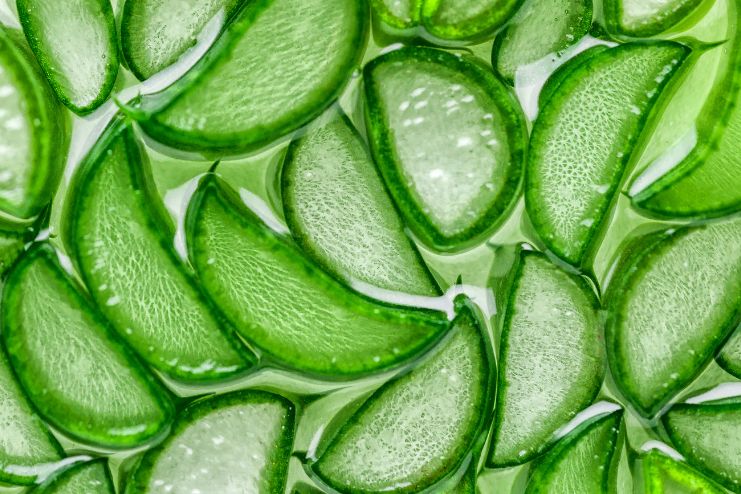
Aloe vera, or Aloe barbadensis, is a succulent plant with numerous health advantages. Alternative medicine has treated numerous ailments with it. A plant that resembles a cactus, aloe vera grows well in hot, dry regions. The primary component of the plant utilized for both medicinal and cosmetic purposes is aloe gel.
Antioxidants are essential for good health. Potent antioxidants found in aloe vera gel are members of the broad family of compounds called polyphenols. Together with a number of other substances found in aloe vera, these polyphenols aid in preventing the growth of some bacteria that can infect people.
Aloe vera soothes the injured region and releases heat that has been retained in the skin, offering immediate relief from minor burns. Just cut a fresh aloe vera leaf and remove the gel to apply. Apply a small amount of the gel to the burn and allow it to air dry. You can do this several times a day to help the skin stay moisturized and promote healing.
Aloe vera is a natural antiseptic that cures small cuts, keeps the area hydrated, and prevents infection. After properly washing the wound with mild soap and water, apply a tiny bit of aloe vera gel straight to it. For the best recovery, reapply the gel two to three times a day and cover it with a fresh bandage to protect the region.
Read More: 9 Home Remedies for Acne and Pimples
2. Honey: Liquid Gold for Wound Healing
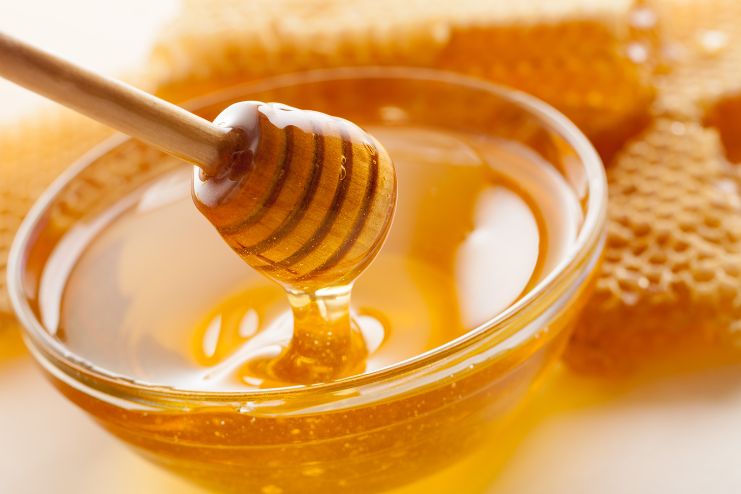
Honeybees use the nectar of the flowering plants to make a sweet liquid. There are over 320 different types of honey, each with a unique flavor, color, and odor.
Honey is mostly composed of sugar, which contains a variety of vitamins, minerals, iron, zinc, and antioxidants. It also has antibacterial, anti-inflammatory, and antioxidant properties and is a natural sweetener. Honey is frequently applied locally to burns to aid wound healing and taken orally to alleviate coughs.
In fact, over the years, much research has been done on the creation of honey-based adhesives for wound treatment and other biomedical uses. Using honey in wound-healing solutions has several benefits, including promoting angiogenesis, accelerating dermal regeneration and epithelialization, boosting the immune system, and lowering the risk of infections with harmful microbes that interfere with the healing process.
Honey draws out heat, eases discomfort, and encourages tissue regeneration to provide instant relief for mild burns. Dab the burn with a small amount of unprocessed, organic honey. After a few minutes of sitting, cover it with gauze or a fresh bandage. To promote the best possible healing, reapply the honey and replace the dressing every several hours.
Honey is a natural antiseptic for minor cuts, inhibiting the growth of bacteria and lowering the risk of infection. After thoroughly cleaning the wound, apply a tiny bit of raw honey. For added protection, you can bandage it or leave it exposed. Rely on fresh honey two to three times a day until the wound heals.
3. Tea Bags: The Surprising Soothers
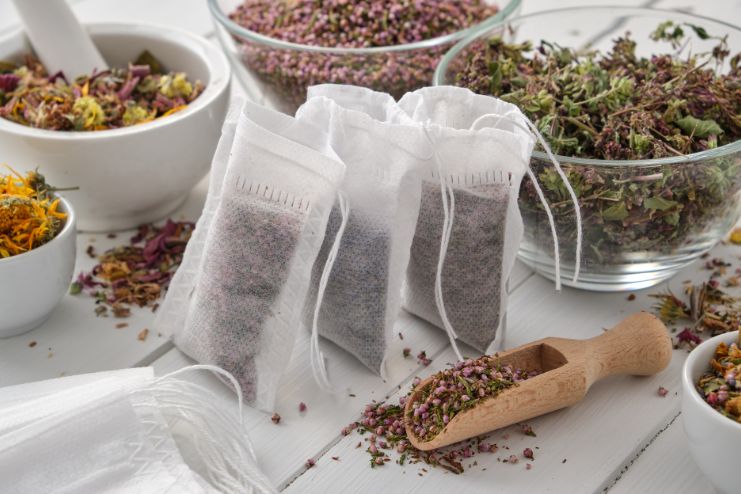
It is understandable why tea is among the most widely consumed drinks worldwide. In addition to being tasty, calming, and revitalizing, people value tea for its numerous possible health advantages. Tea contains a class of chemicals called tannins. They have a unique flavor, intriguing chemical characteristics, and potential health advantages.
Green plants and various meals, such as tea and wine, frequently contain tannins. The dry, astringent sensation that makes you want to pucker your lips after eating or drinking is caused by tannins, which are polyphenols.
Tea bags cool the injured region and lessen redness, offering immediate treatment for minor burns. To use, steep a tea bag in hot water for a few minutes, then let it cool thoroughly, or, for faster cooling, put it in the fridge. After cooling, carefully apply the moist tea bag to the burn for ten to fifteen minutes.
Tea bags can help reduce inflammation and stop bleeding from minor injuries. Clean the wound first, then place a damp, cooled tea bag directly onto it and gently press for a few minutes. It can lessen discomfort, stop infection, and aid with blood clotting.
Read More: 5 Skin Benefits of Castor Oil and How to Use
4. Coconut Oil: Nourishment for the Skin

Coconut oil is a plant-based oil made from raw coconuts. It is highly saturated, and if you have ever used it in cooking, you may have observed that it transforms from a solid white substance to a clear liquid when heated.
Medium-chain fatty acids comprise around 65% of coconut oil’s composition and are partly responsible for its skin-benefitting properties.
You might even want to have coconut oil in your medical cabinet. Lauric acid makes up 49% of coconut oil and has antibacterial qualities, which are also found in many vegetable oils. Therefore, it can help soothe skin lesions like scratches or razor burns, even though it cannot heal severe wounds on the skin’s surface.
Coconut oil offers a calming treatment for mild burns by retaining moisture and keeping the skin from drying out or flaking. Once the burn has cooled, gently apply a little coating of virgin coconut oil to the affected region. It promotes growth of new skin tissue and keeps the skin moisturized.
When applied to small incisions, coconut oil reduces swelling and redness while forming a protective barrier. After washing the wound with mild soap and water, apply a tiny bit of coconut oil straight onto the wound. For added protection, you can bandage it or leave it exposed.
5. Turmeric Paste: The Spice Rack Healer

For centuries, turmeric has been associated with medicinal and cosmetic benefits. It is a vivid yellow-orange spice linked to ginger. Turmeric can be found in supplements, various cosmetic and dermatological preparations, or as a ground spice.
Turmeric has anti-inflammatory and antioxidant properties. These qualities could give the skin a radiance and sheen. Turmeric may also revitalize the skin by enhancing its inherent radiance.
Researchers have studied curcumin, a polyphenolic molecule with anti-inflammatory and antioxidant properties, for several applications, including tissue regeneration. Studies show curcumin’s analgesic properties can help manage burn pain while promoting healing through anti-inflammatory processes.
Turmeric paste relieves pain and keeps minor burns from getting infected. To make a thick, smooth paste, combine a teaspoon of turmeric powder with a few drops of water. After cooling the burn with water, apply a thin coating, leave it for 15 to 20 minutes, and rinse gently with lukewarm water. To promote healing, repeat this twice daily.
Turmeric’s antimicrobial qualities prevent infections and promote faster clotting when applied to minor cuts. After thoroughly cleaning the wound, gently apply a tiny bit of turmeric. If necessary, wrap it with a fresh bandage or let it air dry naturally. Until the wound heals, reapply two to three times a day.
Read More: 16 Ways Aloe Vera Benefits Your Health
6. Baking Soda: The Kitchen Staple First Aid
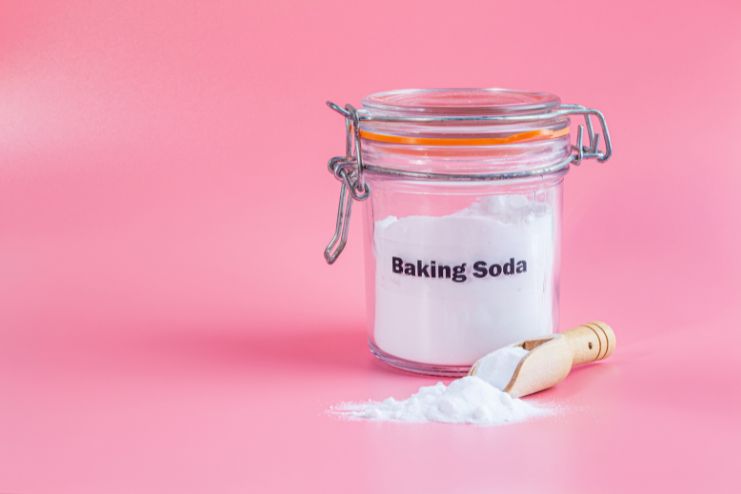
Baking soda is a combination of sodium and bicarbonate ions. Since it completely dissolves in water, it is frequently used in cleaning and dental hygiene products to eliminate acidity, smells, and bacteria.
Although yeast infections are common, some symptoms, such as swelling and itching, can make it difficult for a person to carry out regular tasks. A baking soda bath may help relieve symptoms and speed up recovery.
Baking soda relieves minor burns by removing heat and reducing discomfort. Make a smooth paste with a small amount of water and one teaspoon of baking soda. After gently applying the paste to the affected area and letting it sit for ten to fifteen minutes, rinse it with cool water.
Baking soda is a mild antiseptic for minor cuts, minimizing swelling and discomfort while preventing bacterial growth. First, clean the wound, apply a thin layer of the baking soda paste, leave it on for a few minutes, and rinse. Lightly dust the wound with dry baking soda to aid moisture absorption and infection prevention.
7. Lavender Essential Oil: Fragrant Healing
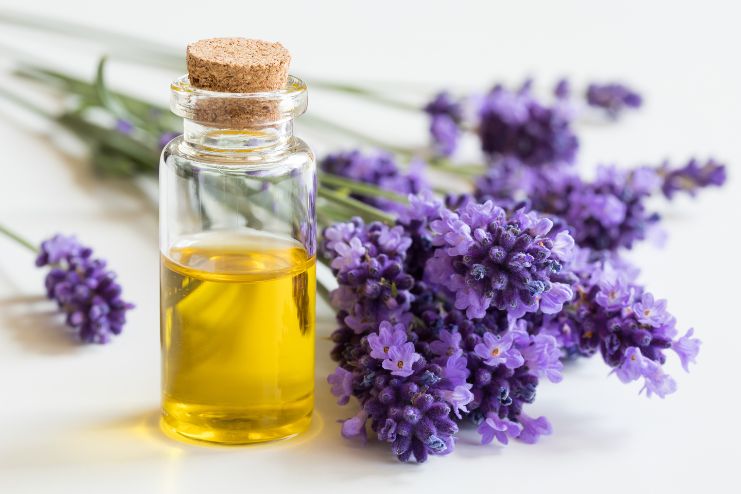
Essential oils are gaining popularity as complementary and alternative medicine. They work well for various ailments, including bug bites, discomfort, and hair care. Some types of oils can also treat small, minor burns. However, a physician should evaluate deep burns.
Lavender essential oils are a powerful burn cure. It possesses antibacterial action, pain-relieving qualities, and the capacity to lower inflammation. Despite popular belief, no scientific proof supports the anecdotal notion that lavender oil can help cure burns.
Many people have reported seeing some recovery after applying lavender essential oil to a burned region of skin for a specific amount of time. This oil has anti-inflammatory, antibacterial, and antimicrobial qualities.
Lavender essential oil soothes the skin and keeps blisters from forming on mild wounds. To prevent skin sensitivity, combine a few drops of lavender oil with a carrier oil, such as coconut or olive oil, before using. Gently dab the mixture onto the burn using your fingertips or a clean cotton ball.
Lavender oil promotes wound healing and is a natural antiseptic for minor injuries. After washing the wound and diluting it with a carrier oil (a 1:1 ratio is advised), apply lavender essential oil straight to it. For added protection, use a bandage or leave it exposed.
Read More: Petroleum Jelly – Everything You Need To Know
Conclusion
Although minor wounds and burns occur frequently, they can be promptly and successfully treated at home with the correct medicines. Natural remedies with antibacterial, anti-inflammatory, and calming qualities to aid healing include aloe vera, honey, coconut oil, turmeric paste, baking soda, tea bags, and lavender essential oil. These treatments offer a gentle, chemical-free first aid method and are readily available.
Remembering these home remedies can help you manage minor injuries without requiring immediate medical assistance. When accidents occur, keeping these easy-to-use yet effective cures in your home guarantees immediate relief and quicker recovery. Be ready with these first-aid necessities and embrace the restorative power of nature!
References
- https://www.medicalnewstoday.com/articles/318591#antioxidant-and-antibacterial-effects
- https://www.news-medical.net/health/Health-Benefits-and-Dangers-of-Aloe-Vera.aspx
- https://www.news-medical.net/news/20240711/How-Aloe-veras-medicinal-properties-make-it-essential-in-medicine-cosmetics-and-food-products.aspx
- https://www.mdpi.com/1420-3049/26/16/4784
- https://www.mayoclinic.org/drugs-supplements-honey/art-20363819
- http://www.worldwidewounds.com/2001/november/Molan/honey-as-topical-agent.html
- https://www.healthline.com/nutrition/tannins-in-tea
- https://www.mindbodygreen.com/articles/tannins-in-tea
- https://www.sirjasonwinters.com/tannins-and-tea/
- https://health.clevelandclinic.org/coconut-oil-for-skin
- https://www.phcogrev.com/sites/default/files/PhcogRev_2019_13_25_24.pdf
- https://www.allure.com/story/beauty-uses-for-coconut-oil
- https://www.mdpi.com/2227-9059/11/12/3348
- https://www.clinsurggroup.us/Dermatology-Clinical-Research/IJDCR-3-120.php
- https://www.healthline.com/health/turmeric-for-skin
- https://www.jintegrativederm.org/article/122501-baking-soda-and-the-skin-a-review-of-baking-soda-in-dermatology
- https://www.healthline.com/health/baking-soda-bath
- https://www.medicalnewstoday.com/articles/321398
- https://www.healthline.com/health/essential-oil-for-burns#best-essential-oils
- https://willowandsage.com/lavender-oil/
In this Article



















